26 Tay Street, Perth, Perth and Kinross, PH1 5LQ
The name of this pub recalls the building’s original purpose as a savings bank and Perth’s status in medieval times as the capital of Scotland. Spread along the west bank of the River Tay, modern Perth has its roots deep in the past. In 1210, William, the Lion King of Scots, founded a royal burgh here – the early capital of Scotland until c1452. It was also the meeting place for parliament, with Scottish kings being crowned at the nearby Palace of Scone.
Prints and text about The Capital Asset.
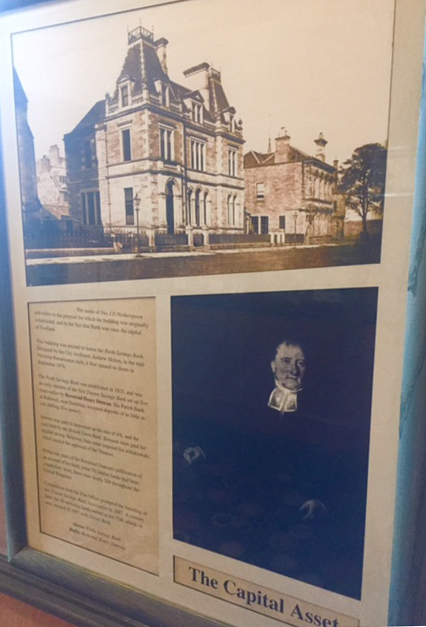
The text reads: The name of this J D Wetherspoon pub refers to the purpose for which the building was originally constructed, and to the fact that Perth was once the capital of Scotland.
This building was erected to house the Perth Savings Bank. Designed by the City Architect, Andrew Heiton, in the mid-Victorian Renaissance style, it first opened its doors in September 1876.
The Perth Savings Bank was established in 1815, and was an early imitator of the first Trustee Savings Bank set up five years earlier by Reverend Henry Duncan. His Parish Bank at Ruthwell, near Dumfries, accepted deposits of as little as one shilling (five pence).
Interest was paid to depositors at the rate of 4%, and the cash held by the British Linen Bank. Bonuses were paid for regular saving. However, fines were imposed for withdrawals, which needed the approval of the Trustees.
Within ten years of the Reverend Duncan’s publication of an account of his bank, some 70 similar banks had been established. Soon, there were nearly 500 throughout the United Kingdom.
Competition from the Post Office prompted the founding of the Trustee Savings Bank Association in 1887. A century later, the 16 surviving banks united as the TSB, which, in turn, merged in 1995 with Lloyds Bank.
Above: Perth Savings Bank
Right: Reverend Henry Duncan.
Photographs and text about Bell’s Whiskey.
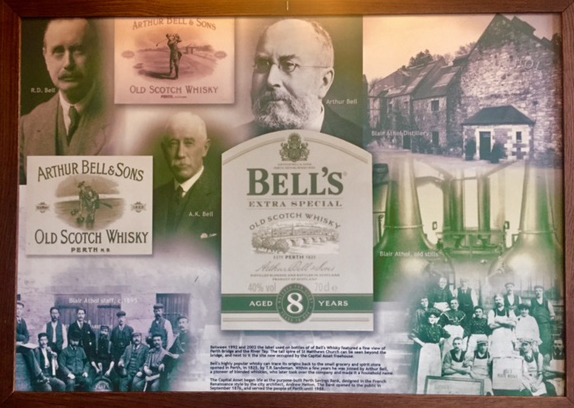
The text reads: Between 1992 and 2002 the label used on bottles of Bell’s Whisky featured a fine view of Perth Bridge and the River Tay. The tall spire of St Matthew’s Church can be seen beyond the bridge, and next to it the site now occupied by The Capital Asset freehouse.
Photographs and text about the Fair Maid of Perth.
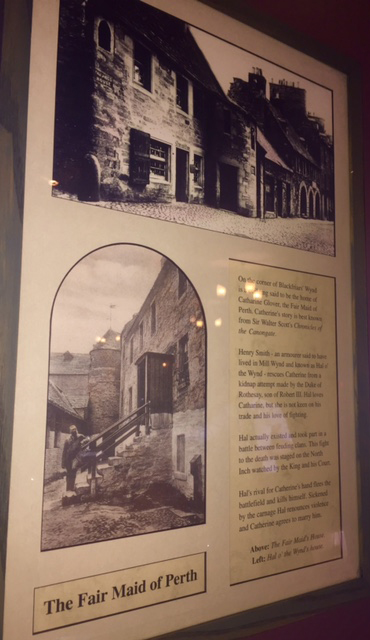
The text reads: On the corner of Blackfrairs’ Wynd is a building said to be the home of Catharine Glover, the Fair Maid of Perth. Catherine’s story is best known from Sir Walter Scott’s Chronicles of the Canongate.
Henry Smith – an armourer said to have lived in Mill Wynd and known as Hal o’ the Wynd – rescues Catherine from a kidnap attempt made by the Duke of Rothesay, son of Robert III. Hal loves Catherine, but she is not keen on his trade and his love of fighting.
Hal actually existed and took part in a battle between feuding clans. This fight to the death was staged on the North Inch watched by the King and his Court.
Hal’s rival for Catherine’s hand flees the battlefield and kills himself. Sickened by the carnage Hal renounces violence and Catherine agrees to marry him.
Above: The Fair Maid’s House
Left: Hal o’ the Wynd’s house.
Prints and text about Bowerswell House.
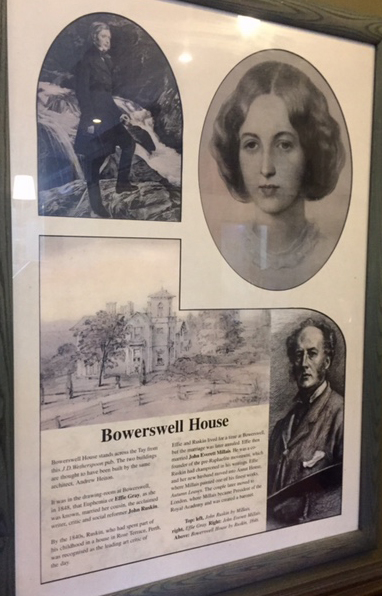
The text reads: Bowerswell House stands across the Tay from this J D Wetherspoon pub. The two buildings were thought to have been built by the same architect, Andrew Heiton.
It was in the drawing-room at Bowerswell, in 1848, that Euphemia or Effie Gray, as she was known, married her cousin, the acclaimed writer, critic and social reformer John Ruskin.
By the 1840s, Ruskin, who had spent part of his childhood in a house in Rose Terrance, Perth, was recognised as the leading critic of the day.
Effie and Ruskin lived for a time at Bowerswell but the marriage was later annulled. Effie then married John Everett Millais. He was a co-founder of the pre-Raphaelite movement, which Ruskin had championed in his writings. Effie and her new husband moved into Annat House, where Millais painted one of his finest works, Autumn Leaves. The couple later moved to London, where Millais became President of the Royal Academy and was created a baronet.
Top: left, John Ruskin by Millais, right: Effie Gray
Right: John Everett Millais.
Above: Bowerswell House by Ruskin, 1846.
An original Chubb vault, used when the pub was the Perth Savings Bank.
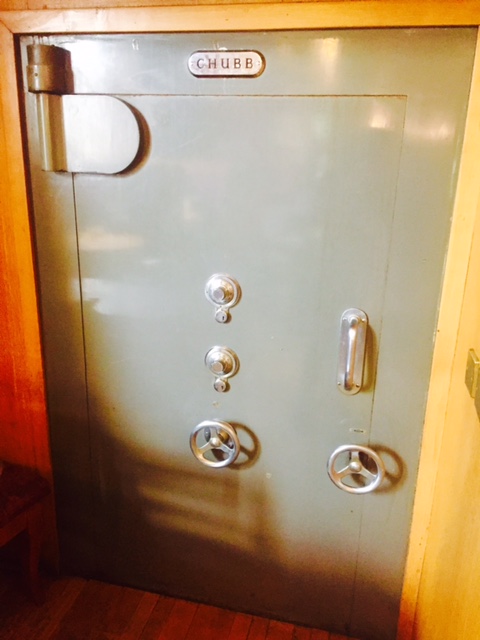
External photograph of the building – main entrance.
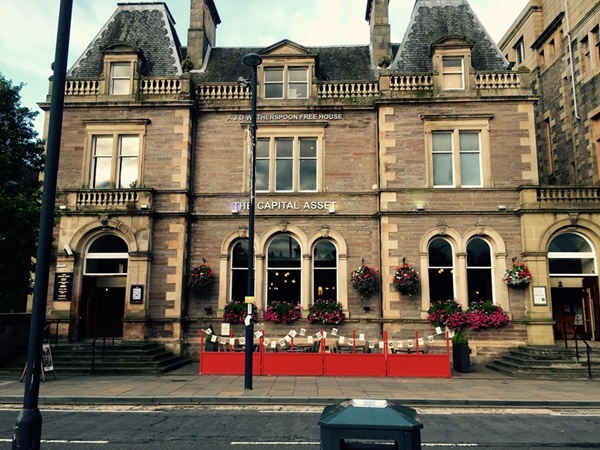
If you have information on the history of this pub, then we’d like you to share it with us. Please e-mail all information to: pubhistories@jdwetherspoon.co.uk